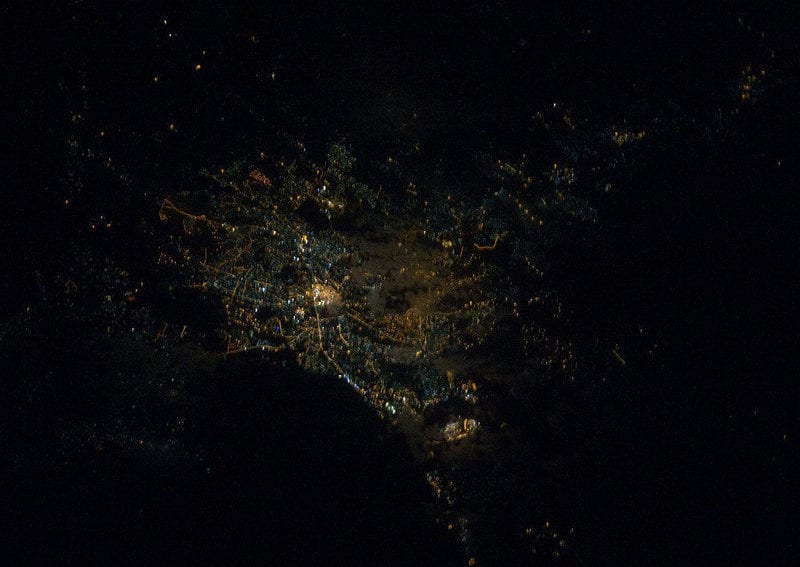By: Jan Piotrowski
Send to a friend
The details you provide on this page will not be used to send unsolicited email, and will not be sold to a 3rd party. See privacy policy.
Climate scientists have received a boost of up to US$150 million from US space agency NASA for a five year campaign to probe how air pollution, manmade fires across Africa and warming oceans may affect our climate.
The money will be split equally among five projects under the umbrella of the agency’s Earth Venture initiative, which is designed to fill major knowledge gaps in earth sciences. A mixture of plane flights and surface measurements will shed light on processes that NASA’s satellite missions cannot pick up.
The projects are: Atmospheric chemistry and air pollution, Ecosystem changes in a warming ocean, Greenhouse gas sources, African fires and Atlantic clouds, and Melting Greenland glaciers. [1]
This is NASA’s second series of Earth Venture suborbital projects, recommended by the National Research Council in 2007. In 2010, the first series of five projects was selected.
“These innovative airborne experiments will let us probe inside processes and locations in unprecedented detail.”
Jack Kaye, NASA
"These new investigations address a variety of key scientific questions critical to advancing our understanding of how Earth works," said Jack Kaye, associate director for research in NASA's Earth Science Division in Washington in a NASA press release. “These innovative airborne experiments will let us probe inside processes and locations in unprecedented detail that complements what we can do with our fleet of Earth-observing satellites.”
Collecting hard data is the goal, but NASA scientist Hal Maring says that it is much more than an academic exercise — all projects were selected with a “heavy bias” towards their relevance for policy.
“Our mission is to push the boundaries of field science to address weaknesses in our knowledge of Earth systems,” he says. “But behind these words is the assumption that the science better make a difference.”
With the project to probe the effects of widespread fire use – such as biomass burning – in Africa on cloud cover over the Atlantic Ocean, for example, team leader Jens Redemann hopes that his data could eventually help agriculture adapt to a changing water cycle by improving modelling of the continent’s seasonal rains.
Two other projects will identify the sources and travel patterns of greenhouse gases, and the impact of air pollution on these gases. The remaining schemes will focus on the impact of warming oceans on glacier melt in Greenland and on microscopic algae that support much of marine life. Now that the funding is secured, NASA aims to have the experiments up and running by mid-2015.
All research will be directed by US scientists as NASA rules forbid the agency from funding foreign institutions. But given the global scope of the questions being asked, there will be opportunity for researchers from developing nations to get involved – and Redemann’s team is already working with Namibian and South African scientists.
But Lindsey Jones, a researcher at London-based think-tank the Overseas Development Institute, is sceptical about the claim that developing world researchers will benefit. Western-led initiatives, he says, have a poor track record of producing fruitful and equal cooperation. Furthermore, he believes that better data will not necessarily make populations and parliaments any better at fighting climate change.
“A better understanding of climate science is not going to have an impact unless we tackle some of the socioeconomic and political blockages,” he says.
References
[1] NASA Airborne Campaigns Tackle Climate Questions from Africa to Arctic (NASA, 25 November 2014)














